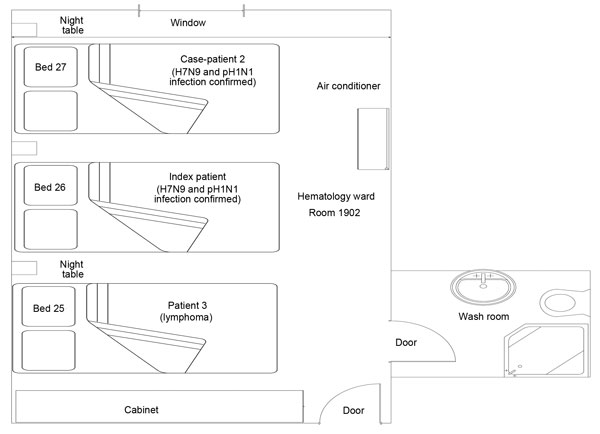Volume 22, Number 4—April 2016
Synopsis
Nosocomial Co-Transmission of Avian Influenza A(H7N9) and A(H1N1)pdm09 Viruses between 2 Patients with Hematologic Disorders
Figure 2

Figure 2. Schematic floor plan of the hematology ward where 2 case-patients with confirmed avian influenza A(H7N9) and A(H1N1)pdm09 virus co-infection and 1 non–H7N9-infected patient stayed, Taizhou Hospital, Zhejiang Province, China, January 10–15, 2014. The room was 22.4 m2 (6.4 m × 3.5 m) in floor area, with 1 door (30 cm × 40 cm) and 1 window (105 cm × 20 cm), and 0.6 m of space separated the beds of the patients. H7N9, avian influenza A(H7N9) virus; pH1N1, influenza A(H1N1)pdm09 virus.
1These authors contributed equally to this article.
2These authors contributed equally to this article.
Page created: March 15, 2016
Page updated: March 15, 2016
Page reviewed: March 15, 2016
The conclusions, findings, and opinions expressed by authors contributing to this journal do not necessarily reflect the official position of the U.S. Department of Health and Human Services, the Public Health Service, the Centers for Disease Control and Prevention, or the authors' affiliated institutions. Use of trade names is for identification only and does not imply endorsement by any of the groups named above.